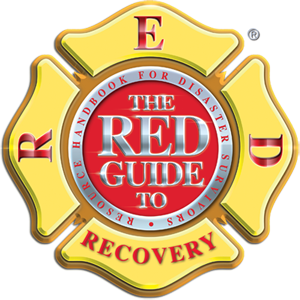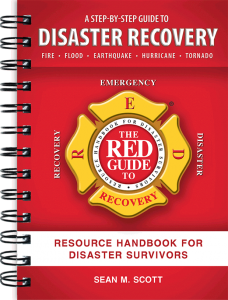Download this article and more from our free toolbox!
By: Sean M. Scott & Briana C. Scott
During a structure fire, heat and pressurized smoke can permeate the air, infiltrate walls, ceiling cavities, and attic spaces, and find its way anywhere air can travel. After the fire is extinguished, porous materials begin the process of off-gassing and releasing volatile organic compounds (VOC’s). These odors can last for years if the affected materials are not properly cleaned, deodorized, encapsulated, or replaced.
Oxidizing gasses used for smoke deodorization such as hydroxyls or ozone, the use of HEPA vacuuming and air filtration, and other cleaning methods can greatly reduce smoke odors and particulate matter. However, in some cases the standard methods of deodorization may not work. Property owners as well as restorers need to realize that on a molecular level, any structure affected by fire or smoke may not be able to be totally sanitized. Furthermore, it needs to be understood that there are certain types of combustion byproducts in the air we breathe as well as chemicals, and gases that current deodorization processes may have little to no affect. Consumers often misinterpret the smoke deodorization process as a guarantee of complete air sanitation, which in most cases is impossible to achieve.
When difficult smoke odors are encountered, restoration contractors often use deodorizers or “re-odorizers” to mask or camouflage them. Over time, these odor counteractant fragrances dissipate and under the right conditions, whatever smoke odors were treated or concealed can reactivate and reappear. Here is where real trouble can begin.
In situations where smoke odors are detected after the deodorization process is complete, the first reaction from the restoration contractor may be to try and downplay the possibility that any real odor exists.
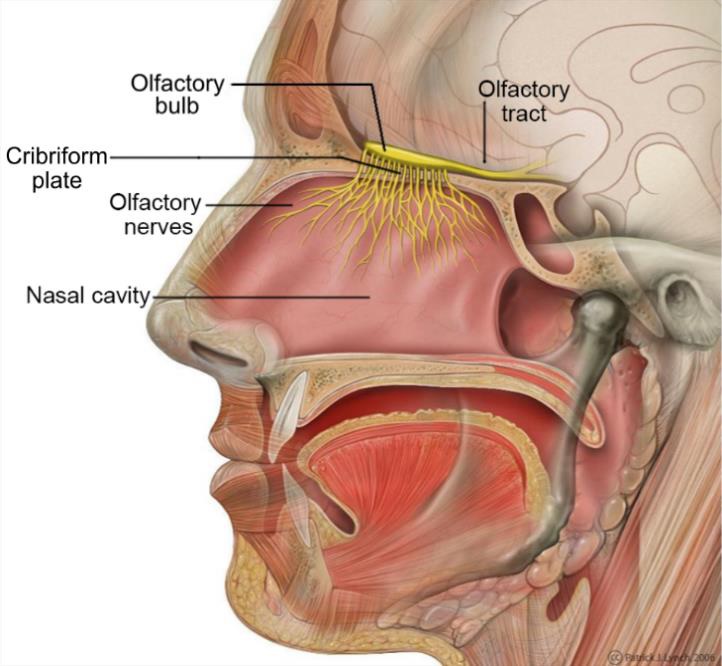
Source: Wikimedia Commons / Patrick J. Lynch
After all, they have used all the state-of-the-art cleaning agents, equipment and methods that are supposed to work. Could the culprit be a failure of the deodorization methods deployed, an over sensitive sense of smell on the owner’s part, a desensitized sense of smell on the restorer’s part, both, or something else? In this article we will explore this issue and take a closer look into smoke odors and one of the most complex of the five human senses – the sense of smell.
How does the sense of smell work?
The scientific term for the sense of smell is called olfaction. Olfaction comes from specialized sensory cells, called olfactory sensory neurons or OSN’s, which are found in a small patch of tissue high inside the nose. These cells connect directly to the brain and each has one odor receptor. Microscopic molecules released by substances around us—whether it’s coffee brewing or the scent of a flower or perfume, fragrances stimulate these receptors.
Once the neurons detect the molecules, they send messages to your brain, which identifies the smell. There are more smells in the environment than there are receptors, and any given molecule may stimulate a combination of receptors, creating a unique representation in the brain. These representations are registered by the brain as a particular smell.
When OSNs become damaged or inflamed, they can send a distorted signal to the brain. In other cases, the smell signal can become blocked. This blockage prevents the smell signal from reaching the nose or the brain.
Smells reach the OSN’s through two pathways. The first pathway is through your nostrils. The second pathway is through a channel that connects the roof of the throat to the nose. Chewing food releases aromas that access the OSN’s through the second channel. If the channel is blocked, such as when your nose is stuffed up by a cold or flu, odors can’t reach the sensory cells that are stimulated by smells. As a result, you lose much of your ability to enjoy a food’s flavor. In this way, your senses of smell and taste work closely together.
How sensitive is your sense of smell?
The human sense of smell is more sensitive than most might believe. For example, the odorant ethyl mercaptan that is often added to natural gas or propane as a warning agent, can be detected at concentrations ranging between 0.2 ppb (parts per billion) and 0.009 ppb. This is equivalent to approximately three drops of odorant within an Olympic-size swimming pool.
Extremely low detection thresholds have been reported for the odorants d-limonene and ozone as well. The lowest human detection threshold known is for isoamyl mercaptan reported at 0.77 parts per trillion. (1) It has been calculated that humans can discriminate at least 1 trillion different smells or olfactory stimuli. (2)
What are smell disorders?
Some fire restoration literature teaches that if someone complains of smelling smoke odors after the deodorizing process is completed, that this is attributed to psychological conditions or “phantom odors”. Although this could be true in some cases, it would be unreasonable to assume that the deodorization process is foolproof or that anyone who smells smoke odors after a deodorization has a psychiatric disorder or medical condition.
I personally know of cases where homes that had fires and were “properly deodorized” later ended up in litigation and had to be torn apart and re-deodorized or torn down completely. These were the direct result of failed smoke odor remediation processes. In addition, some people cannot tolerate chemical de-odorizing agents or fragrances, so for them, the use of masking agents or scented deodorizers can present additional problems.
People who have a smell disorder either have a decrease in their ability to smell, or changes in the way they perceive odors. Informed consumers believe that when something is truly clean, there shouldn’t be any odor or fragrance at all.
It has been reported that 1%-2% of North Americans report problems with their sense of smell. In one study, nearly one-quarter of men ages 60–69 had a smell disorder, compared with 11% of women in that age range. Around 14 million in the United States are believed to have a disorder related to the sense of smell.
Common smell disorders
Phantosmia:
Phantosmia is an olfactory hallucination or phantom odor. It is smelling an odor that is not actually there. While people with phantosmia can notice a range of odors, there are a few odors that seem to be most common. These include cigarette smoke, burning rubber, chemicals, such as ammonia, something spoiled or rotten. (3)
Cacosmia:
Cacosmia is a disorder where a person is unable to recognize smells or interpret the odors of different substances. People with cacosmia often feel as though they can smell something offensive, when in fact no such substance is present. When the olfactory system, is not working correctly, a person can perceive even pleasant odors to be foul smelling. With cacosmia, the smell is often described as similar to feces, or a burning, rotten, or chemical odor.
Since smell and taste are closely linked, the condition can also affect your ability to eat. It may make it difficult to identify the actual smell of different foods, or it may cause foods that you usually enjoy to suddenly taste foul. Some people even find the smell and taste of food to be so bad it makes them sick. (4)
Parosmia:
Parosmia is a change in the normal perception of odors, such as when the smell of something familiar is distorted, or when something that normally smells pleasant now smells foul. People with parosmia may experience a loss of scent intensity, meaning they can’t detect the full range of the scents around them.
People with Parosmia can detect an odor that’s present—but the scent smells “wrong” to them. For example, the pleasant odor of freshly baked bread might smell overpowering and rotten instead of subtle and sweet. Scents that used to be pleasant may now become overpowering and unbearable. (5)
Hyposmia:
Hyposmia is a reduced ability to smell and to detect odors or when a person loses part or all of their sense of smell. According to the National Institutes of Health, 12% of adults in the United States have some loss of their sense of smell. (6)
Hyperosmia:
Hyperosmia is a heightened sense of smell, usually caused by a lower threshold for odor. This perceptual disorder arises when there is an abnormally increased signal at any point between the olfactory receptors and the olfactory cortex. The causes of hyperosmia may be genetic, hormonal, or environmental. (7)
Anosmia:
Anosmia is the decreased ability or complete inability to detect odors. It is estimated to afflict 3–20% of the population. (8)
What causes smell disorders?
There are many different causes for smell disorders. These include:
- Upper respiratory tract infections such as bronchitis, sinusitis, rhinitis, or sore throat can cause damage to the olfactory sensory neurons
- Head injuries or brain trauma. Some head injuries can damage the olfactory bulbs in the brain, which are responsible for differentiating smells
- Smoking. Smokers often experience smell disorders. This is believed to be due to direct injury to the OSN’s. The longer and more frequently these cells are exposed to the toxins in cigarettes, the worse the damage over time appears to be
- Exposure to chemical smoke. The smoke from harmful chemicals and acids (including those found in structure fires) can damage the OSN’s. This damage leads to a distorted sense of smell
- Aging
- Growths in the nasal cavities
- Hormonal disturbances
- Dental problems
- Exposure to certain chemicals, such as mercury, lead, insecticides and solvents (9)
Interesting facts about the sense of smell
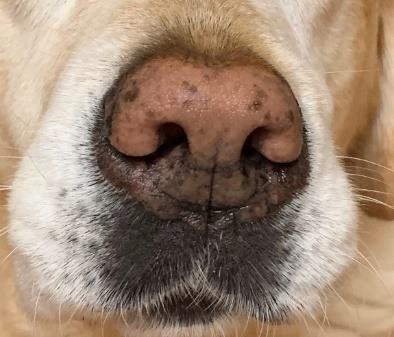
- Humans can detect over one trillion different smells (10)
- Women typically have a stronger sense of smell than men (11)
- During pregnancy, a woman’s sense of smell can become hypersensitive (12)
- Smell is our most memorable sense (13)
- Taste is reliant on scent (14)
- Humans have five to six million odor-detecting cells as compared to dogs that have 220 million cells (15)
Tips to help ensure a successful smoke odor remediation
Every fire has its own chemical makeup or DNA – the fuels that burned, the types of chemicals that have reacted or interacted, the duration of the fire, the intensity of the heat, the odors and gases the fire generates all contribute to the uniqueness and toxicity of structure fire environments. In addition, numerous new chemicals are being introduced into household products and building materials each year, many of which have never been tested or studied to determine what types of potentially toxic byproducts and odors they create when burned.
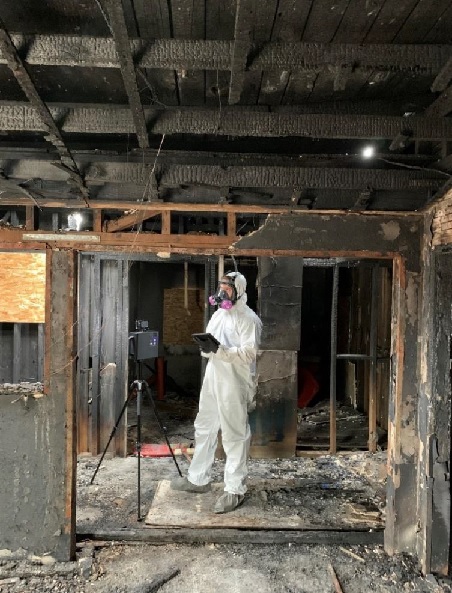 Before the restoration or deodorization process begins, property owners should consider the following steps:
Before the restoration or deodorization process begins, property owners should consider the following steps:
- Wear proper personal protective equipment before entering any fire damaged building. Keep in mind that you have no idea what chemicals or toxins may be present or that the fire may have created.
- Have the damages documented with a Matterport camera. This will provide a clear image for all interested parties on the severity of damage and help support what can be restored and what should be replaced.
- Ask the restoration contractor what restoration processes and chemicals will be used and what their smoke deodorization guarantee includes or does not include.
- Have an independent laboratory conduct air and surface sampling to determine what chemicals, heavy metals, and other toxins may be present. When these types of tests are conducted, a remediation protocol should be included (providing that the testing lab understands the methods of proper smoke odor and particulate remediation). This is similar to what industrial hygienists create for mold, asbestos or lead abatement projects.
- Once the deodorization process is complete, have an independent testing laboratory conduct a clearance test prior to beginning repairs or installing new materials. If this test passes, then you have scientific proof that at the time the remediation work was done and tested, that the affected areas passed and were deemed safe for use or occupancy. Without a clearance test, the proof of a successful deodorization may end up in a battle of the senses – the restorer’s sense of smell versus the occupants.
For more information on testing for toxic smoke particulates and VOC’s, or air quality clearance testing, contact Bruce Rosenblatt with Rarefied Air Environmental at 619-888-4840.
SOURCES:
- US National Library of Medicine https://www.ncbi.nlm.nih.gov/pmc/articles/PMC2908748/
- US National Library of Medicine https://pubmed.ncbi.nlm.nih.gov/24653035/
- Science Direct https://www.sciencedirect.com/topics/medicine-and-dentistry/phantosmia and Healthline https://www.healthline.com/health/phantosmia
- Healthline https://www.healthline.com/health/cacosmia
- Healthline https://www.healthline.com/health/parosmia
- US National Library of Medicine https://www.ncbi.nlm.nih.gov/pmc/articles/PMC3341581/ and Medical News Today https://www.medicalnewstoday.com/articles/318461
- Medical News Today https://www.medicalnewstoday.com/articles/321937
- US National Library of Medicine https://www.ncbi.nlm.nih.gov/pmc/articles/PMC5863566/
- US Dept. of Health & Human Services https://www.nidcd.nih.gov/health/smell-disorders Healthline https://www.healthline.com/health/parosmia; Science Direct https://www.sciencedirect.com/topics/medicine-and-dentistry/parosmia
- US National Library of Medicine https://pubmed.ncbi.nlm.nih.gov/24653035/
- Daily Mail https://www.dailymail.co.uk/sciencetech/article-2822672/Women-really-better-sense-smell-men-Study-finds-female-brain-50-olfactory-cells.html
- US National Library of Medicine https://www.ncbi.nlm.nih.gov/pmc/articles/PMC3915141/
- Discover Magazine https://www.discovermagazine.com/mind/the-sense-of-smell-in-humans-is-more-powerful-than-we-think
- BMC Journal https://flavourjournal.biomedcentral.com/articles/10.1186/s13411-015-0040-2
- Live Science https://www.livescience.com/61234-how-dogs-smell-cancer.html
- Nasal illustration on page 1 designed by Patrick J. Lynch. Source Wikimedia Commons
DISCLAIMER:
This paper is distributed as a public service for informational purposes only. While reasonable efforts were made to ensure the completeness and accuracy of its contents when published, no warranties or guarantees are made with respect to the completeness or accuracy of the information and opinions stated herein. The information and opinions stated herein may not be applicable to or suitable for every individual or situation and constitute the opinions of the Author and the sources of the information sited. Neither the Author nor Heritage Publishing & Communications, Ltd., shall be responsible to any user of the information for any injury, loss or damage of any kind or nature whatsoever that may be sustained as a consequence of the use and application of any information or opinions presented. In no event shall the Author nor Heritage Publishing & Communications, Ltd., be liable for any action taken or not taken by any person in reliance, directly or indirectly, upon the information and opinions provided herein. This publication is provided with the understanding that the Author, is not engaged in rendering legal advice and no legal opinions are provided by the Author. If legal or other professional advice or expert assistance is required, the services of a competent professional should be obtained.
All persons and entities using the information and opinions provided herein do so at their own risk and they hereby waive any and all claims against the Author and Heritage Publishing & Communications, Ltd. Such waiver includes any and all claims arising in contract or tort, and all forms of equitable relief and damages including without limitation compensatory, general, special, and consequential damages.
Without limiting any other disclaimer provided herein, under no circumstances shall the Author be liable for any injury, loss, or damage of any kind or nature whatsoever. Information in this newsletter relates to a subject that changes periodically due to changes in industry practices, science, and technology. All users of this paper acknowledge this disclaimer and agree to the limitations of liability stated above.
Do not use this information if you do not agree with this disclaimer and its limitations of liability as reasonable. If any portion of this disclaimer is found to be unenforceable under applicable law, the remainder of the disclaimer will remain enforceable.
ABOUT SEAN SCOTT:
 Mr. Scott is a licensed general contractor in the State of California who has spent over 39 years in the construction and restoration industry. As a second-generation fire and flood restoration contractor, he has been involved with literally thousands of property damage claims ranging from commercial and residential floods and fires, smoke claims, mold contaminations, subsidence and earthquake claims, explosions, vehicular collisions, and many other types of property damaging incidents. Throughout his career, Sean has worked with all the major insurance carriers that underwrite residential and commercial policies and has worked directly with claims adjusters, independent adjusters, third party administrators, public adjusters, and attorneys. Sean is also the author of two books, The Red Guide to Recovery – Resource Handbook for Disaster Survivors and Secrets of the Insurance Game and the co-author of a third book titled The Native Family Disaster Preparedness Handbook.
Mr. Scott is a licensed general contractor in the State of California who has spent over 39 years in the construction and restoration industry. As a second-generation fire and flood restoration contractor, he has been involved with literally thousands of property damage claims ranging from commercial and residential floods and fires, smoke claims, mold contaminations, subsidence and earthquake claims, explosions, vehicular collisions, and many other types of property damaging incidents. Throughout his career, Sean has worked with all the major insurance carriers that underwrite residential and commercial policies and has worked directly with claims adjusters, independent adjusters, third party administrators, public adjusters, and attorneys. Sean is also the author of two books, The Red Guide to Recovery – Resource Handbook for Disaster Survivors and Secrets of the Insurance Game and the co-author of a third book titled The Native Family Disaster Preparedness Handbook.
Sean has devoted his life to assisting individuals and families rebuild their homes, businesses, and lives and has witnessed first-hand the physical, emotional, and financial challenges people face once the first responders leave the scene. Since 2009, Sean’s award-winning book The Red Guide to Recovery has been adopted by fire departments, emergency management agencies, and relief organizations across the U.S.
Sean now uses his time and expertise to help people navigate the recovery process, speak on recovery and restoration topics, and consult with those in the restoration industry who need guidance to be more successful. He also provides expert witness testimony, estimating services on property damage claims, insurance claim appraisal and umpire services, construction defect investigation, and training.
For more information on disaster restoration and recovery, The Red Guide to Recovery – Resource Handbook for Disaster Survivors and Secrets of The Insurance Game both provide a wealth of insight and information on the recovery process.

For more information, contact: Sean Scott
Office: 858-453-6767
Cell: 858-349-2262
Email: Sean@TheRedGuideToRecovery.com
Website: TheRedGuideToRecovery.com
©Copyright Heritage Publishing & Communications, Ltd. All Rights Reserved 2018
